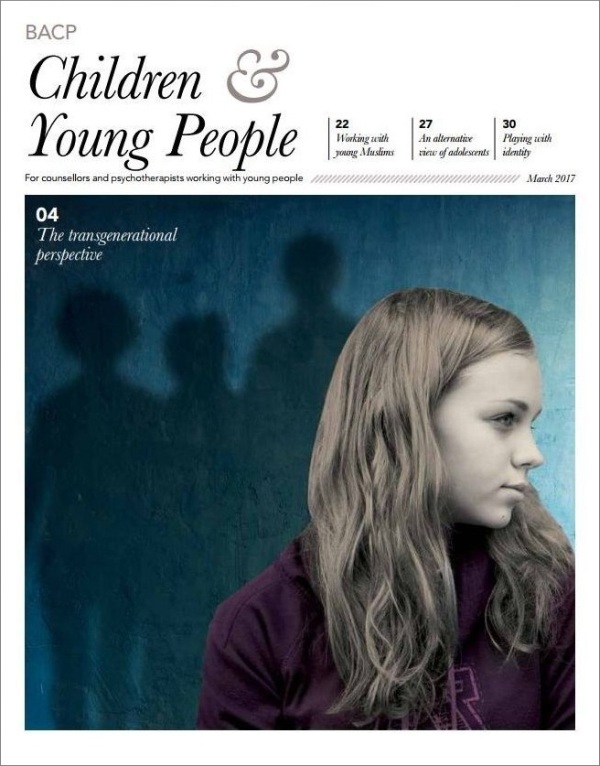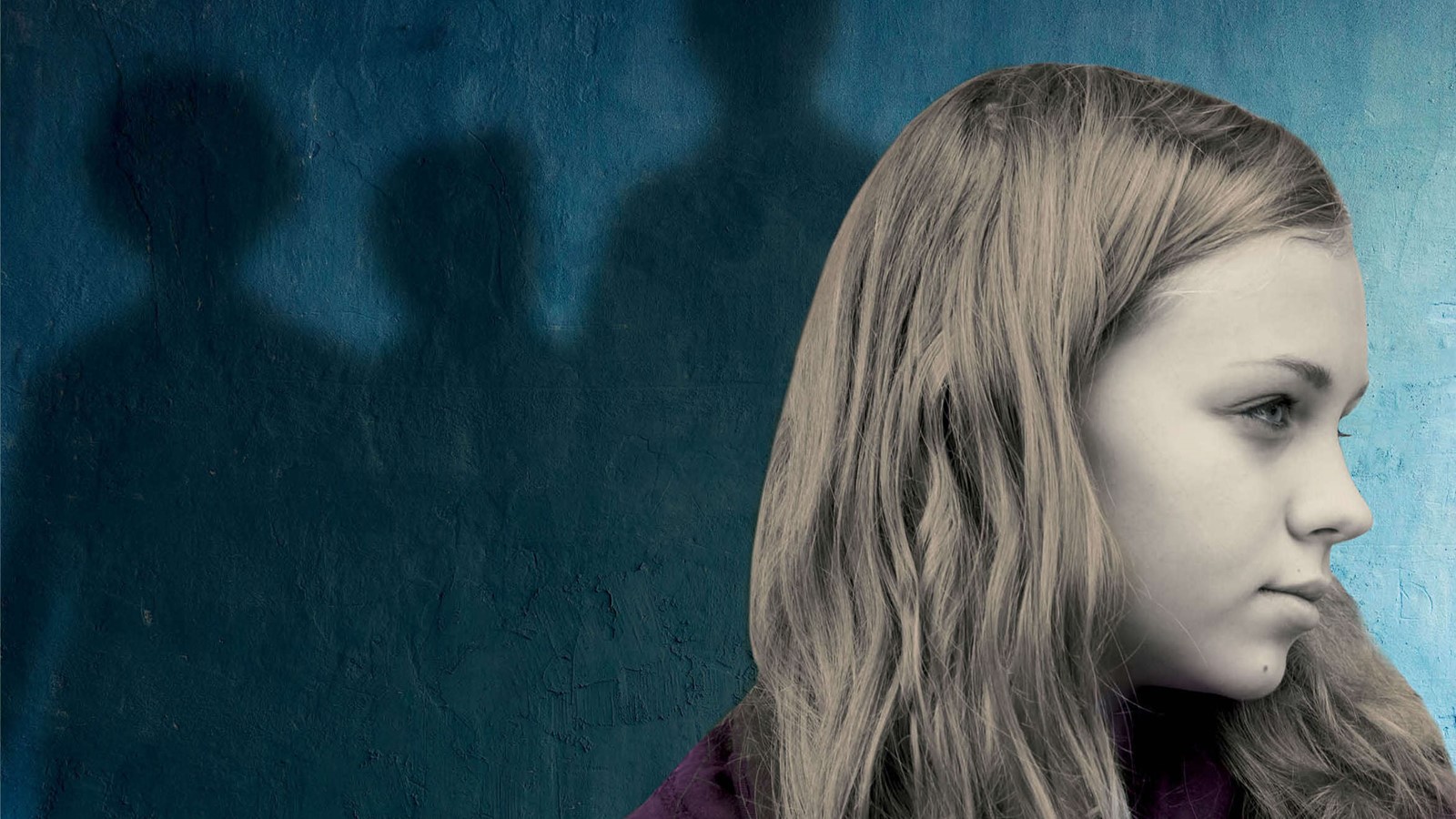In this issue
Features
The transgenerational perspective (free article)
Lucy-Jean Lloyd discusses the transmission of emotion and experience between generations
Working with young Muslim clients
Myira Khan offers practical help
Playing with identity
Charlie Morse-Brown draws a parallel between therapist and adolescent identity formation
In practice
Young people with learning disabilities
Sue Pattison
Snowflakes or widgets?
Edith Bell discusses unique development of identity
A risky farewell
Mike Shooter, immediate past President of BACP, offers some final thoughts
Issues
Self, Other and the We
Cathie O’Brien works with extremely vulnerable young people
Through adolescents’ eyes
Elena Bordin says teenagers are scientists, testing their hypotheses about identity and sexuality
Wondering about Spotted Zebra
Phyl Cooney and Sheila Rae narrate a young looked-after client’s barriers to inclusion
Regulars
Reflecting on… ordinary emotion
Jeanine Connor
Thinking about… ‘normal’
Alison Smyth
Considering… peer supporters in schools
Nick Luxmoore
From the chair

A pdf version of this issue is available from the BACP Children and Young People journal archive
Welcome from the editor
There is much in this issue about the development of child and adolescent identity and individuality. One article uses the word ‘snowflake’ to aptly describe the uniqueness of each person, yet the media often decry young people collectively as a ‘snowflake generation’, a derogatory slur about lack of robustness. Given these two opposing metaphorical stances, my interest was piqued enough to investigate snowflake science and myth. And one article in particular1 left me with a brainful of snowflake snippets that triggered a ‘thoughts on counselling young people’ moment.
1 Dirty containers affect nucleation of the water in them as it freezes. In the same way, a child’s environment (including the emotional or historic one) affects their physical and schema development – even transgenerationally, grandparent to parent to child. Lucy-Jean Lloyd examines this fascinating idea in our lead article. A piece in The Telegraph2 about gene research said: ‘Memories can be passed down to later generations through genetic switches that allow offspring to inherit the experience of their ancestors.’ The article went on to quote Professor Marcus Pembrey, a paediatric geneticist at University College London, who said that the research work done provided ‘compelling evidence for the biological transmission of memory... I suspect we will not understand the rise in neuropsychiatric disorders or obesity, diabetes and metabolic disruptions generally without taking a multigenerational approach.’2 Being moved into care or living with unrealistic restrictions around adolescent risk-taking can also dirty the development container, as our other contributors show.
2 Contrary to (perhaps fake) claims, snowflakes don’t freeze back into exactly the same shape after initially melting – which is why we have hope for every child who has attended therapy, even for a seemingly too-short time, or with an unplanned ending. They can’t un-know what they experienced with us. Edith Bell writes for us about how children make and remake their unique brains in therapy, despite setbacks at a sensitive period of their development.
3 Masaru Emoto claimed that formation of snowflakes varied with the kind of music that was playing as they formed.1,3 His critics counterclaim that he creatively chose only specific snowflakes from each experiment that would back up his theory. This reminds me of cherry-picking only the modalities where an RCT can ‘prove’ the desired client outcome. A selected RCT snowflake for the stakeholder, if you like – caused, of course, by funding pressures, but ‘creatively’ ignoring all the other wonderful ways in which we can aid healthy identity development in our clients.
4 Despite superficial appearances, snowflakes are very rarely perfect in symmetry, according to Kenneth Libbrecht,1 owner of the website I was reading – who adds that of course he always selects the most symmetrical crystals to display [in his photo galleries]: ‘After all, not many people are interested in looking at the irregular ones!’ How like current advertising this is, that shows only a perfect form for male and female to aim at, which in turn influences so much of our young people’s presenting worries and concerns. The attention we afford to all our ‘irregular’ clients with irregular histories will help them value their non-perfect identity and take their rightful place in the diverse world we live in.
So yes, the message of this issue is that we must look at our clients’ histories as being uniquely relevant to their own processes and issues; look transgenerationally at the effect of the emotional container they grew up in; take the risk of allowing imperfect choices and decisions by our unique clients as part of their individual, ongoing identity development; and devise new and creative ways of working with clients who have developed in less than favourable conditions – perhaps with physical and mental setbacks or institutional ‘families’. In other words, learn how their development has allowed or caused them to become themselves, including transgenerationally. And then work within that frame of reference.
I believe this must top our agenda this year. We have it in our hands to encourage beautiful, unique snowflakes in what will therefore not, in future, be considered an easily distressed and singularly unrobust snowflake generation.
Eleanor Patrick, editor
References
1 www.snowcrystals.com/myths/myths.html
2 Grey R. Phobias may be memories passed down in genes from ancestors. [Online.] www.telegraph.co.uk/news/science/science-news/10486479/Phobias-may-be-memories-passed-down-in-genes-from-ancestors.html
3 Emoto M. The hidden messages in water. London: Simon & Schuster; 2005
